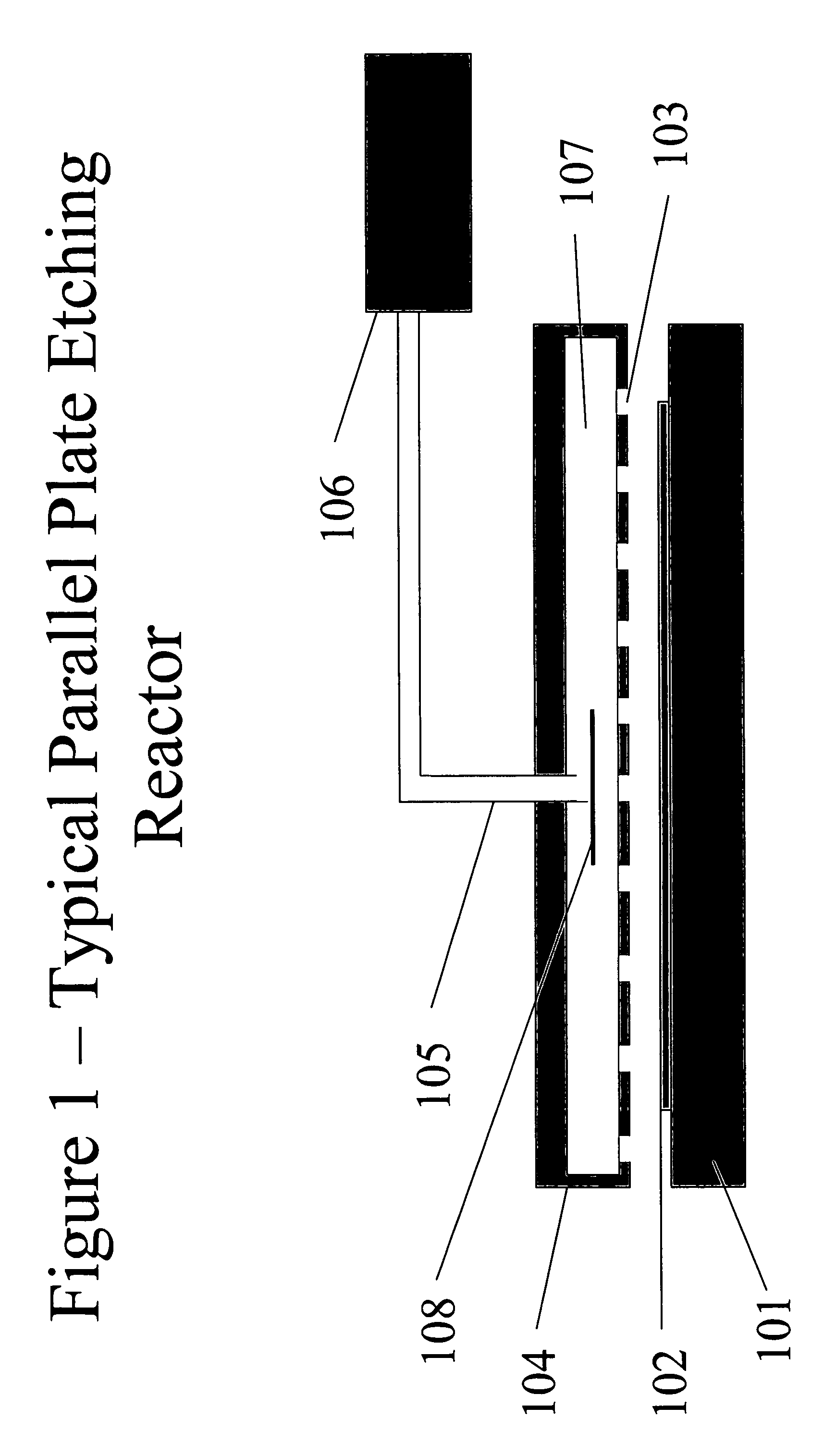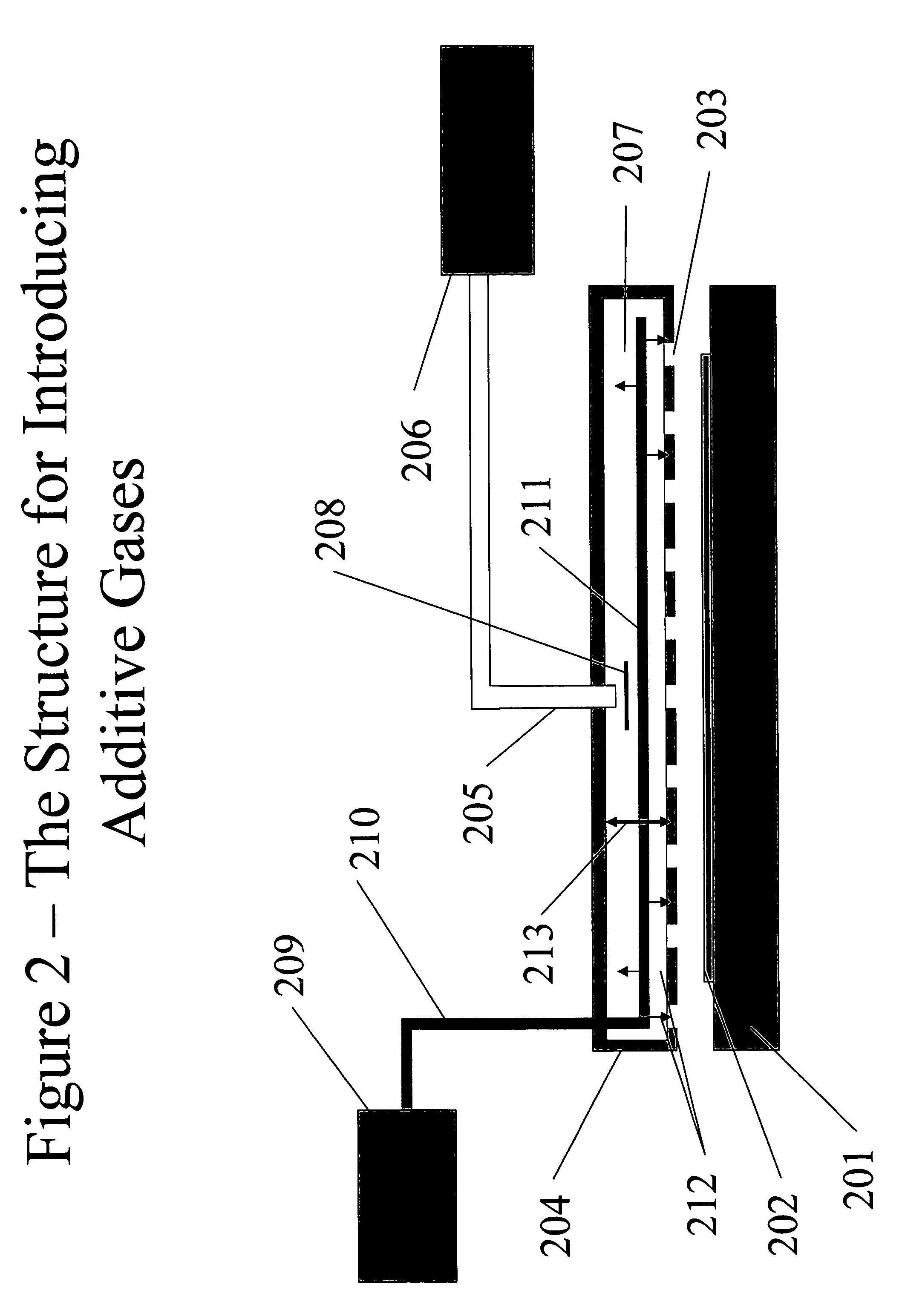Uniform etching system and process for large rectangular substrates
a rectangular substrate, uniform technology, applied in the direction of coatings, chemical vapor deposition coatings, electric discharge tubes, etc., can solve the problems of large electrical potential variations across the surface of the larger substrate, difficult to achieve the uniform rate needed for good device yield, and large potential differences, etc., to achieve the effect of improving the control of the uniformity of etching rate and/or substrate surface electrical potential
- Summary
- Abstract
- Description
- Claims
- Application Information
AI Technical Summary
Benefits of technology
Problems solved by technology
Method used
Image
Examples
Embodiment Construction
[0017]It has been observed that the etching rate across the large substrate varies in a reasonably well-behaved manner except at or near its corners. It has also been found that both the etching rate and the surface potential on the substrate must be adjusted to achieve good uniformity for many types of substrate manufacturing technologies, and that inert gases or other gases which do not greatly affect etching rate can affect the electrical potential on the panel surface. The invention provides a practical, relatively low cost apparatus and process for reducing the variation of both etching rate and surface potential across a large substrate.
[0018]In parallel plate discharges for etching, where the showerhead for introducing gas(es) also serves as one of the electrodes, there has normally been a single primary reservoir feeding the gas mixture to the holes through which it flows into the discharge volume. This reservoir covers an area within the showerhead that extends on all sides...
PUM
| Property | Measurement | Unit |
|---|---|---|
| area | aaaaa | aaaaa |
| concentration | aaaaa | aaaaa |
| processing rate | aaaaa | aaaaa |
Abstract
Description
Claims
Application Information
 Login to View More
Login to View More - R&D
- Intellectual Property
- Life Sciences
- Materials
- Tech Scout
- Unparalleled Data Quality
- Higher Quality Content
- 60% Fewer Hallucinations
Browse by: Latest US Patents, China's latest patents, Technical Efficacy Thesaurus, Application Domain, Technology Topic, Popular Technical Reports.
© 2025 PatSnap. All rights reserved.Legal|Privacy policy|Modern Slavery Act Transparency Statement|Sitemap|About US| Contact US: help@patsnap.com



